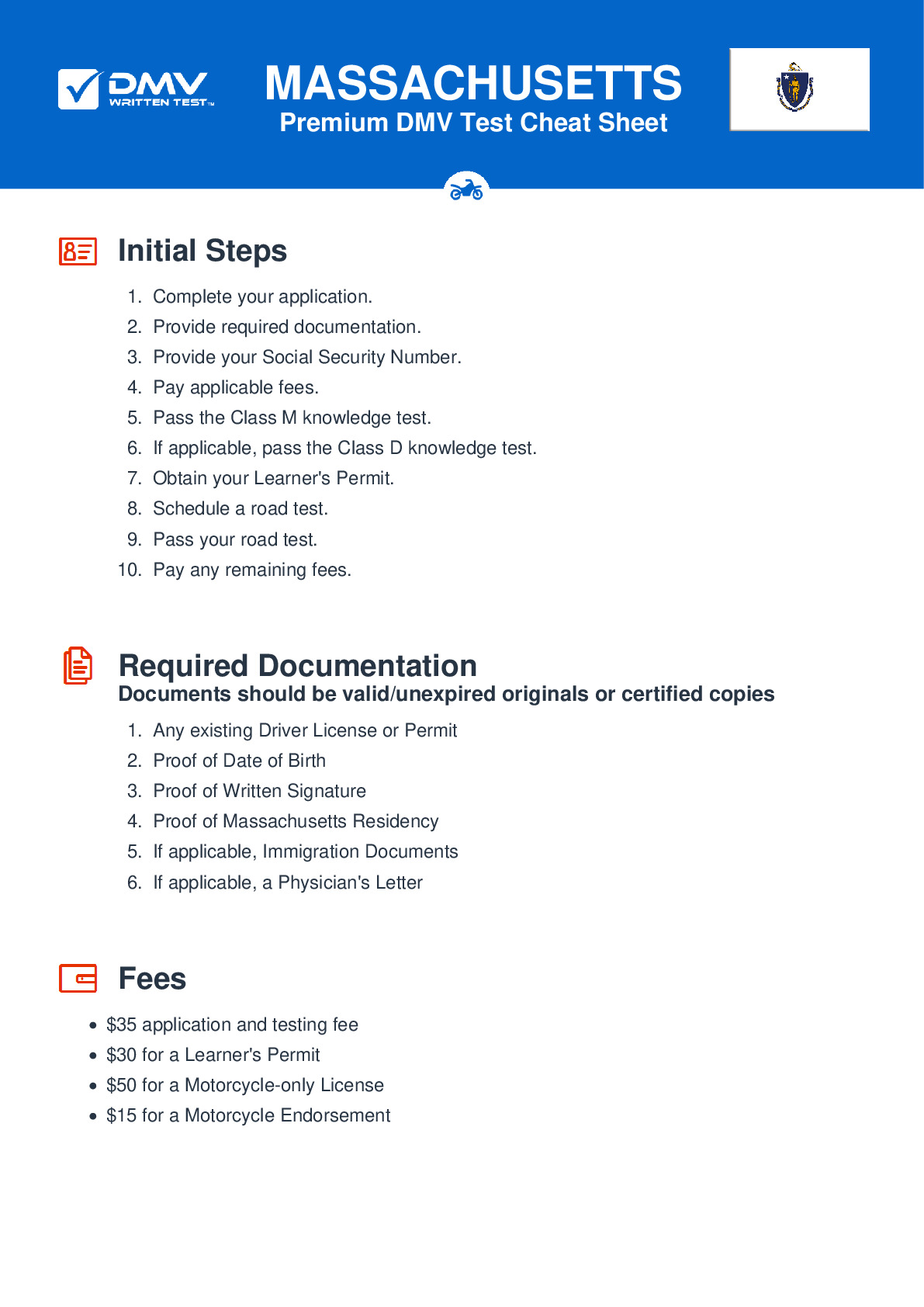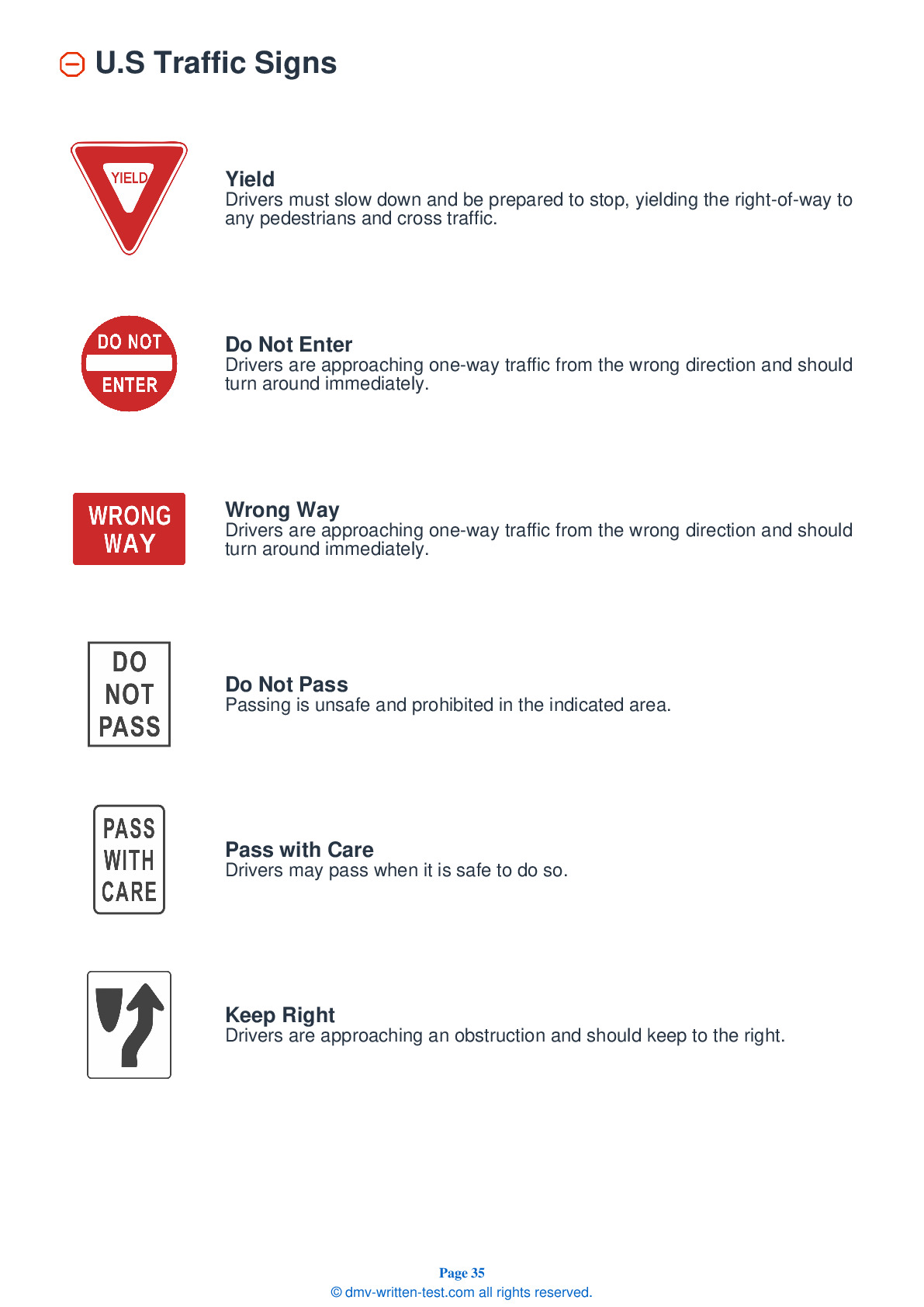2025 Massachusetts Motorcycle Permit Test 13
The following questions are from real DMV written motorcycle permit tests. These are some of the actual permit questions you will face in Massachusetts when getting your motorcycle learners permit. Each motorcycle theory practice test question has three answer choices. Select one answer for each question and select "grade this section." You can find this button at the bottom of the drivers license quiz. For a complete list of questions and answers for Massachusetts please visit https://cheat-sheets.dmv-written-test.com/en/massachusetts/motorcycle.
Number of Tests
Number of Question
Passing Score
16. A helmeted rider is _______ more likely to survive a crash than a rider not wearing a helmet.
Explanation
No matter the speed, riders who are not wearing helmets are three times more likely to die from head injuries than riders who are wearing helmets at the time of a crash.
17. What is the best lane position for a motorcycle?
Explanation
No single lane position is always best and no single lane position should always be avoided. Adjust your lane position as road and traffic conditions change, choosing a position that will maximize your space cushion and allow other drivers to see you more easily.
18. Studies show that nearly ______ of riders killed in motorcycle crashes had been drinking.
Explanation
Alcohol is a major contributor to motorcycle crashes, particularly fatal crashes. Studies show that nearly 40 percent of all riders killed in motorcycle accidents had been drinking.
19. When braking on a slippery surface, you should:
Explanation
To ride safely on a slippery surface, you should reduce your speed and avoid making sudden moves. Use both brakes if you must slow down or stop.
20. Which of the following is true?
Explanation




